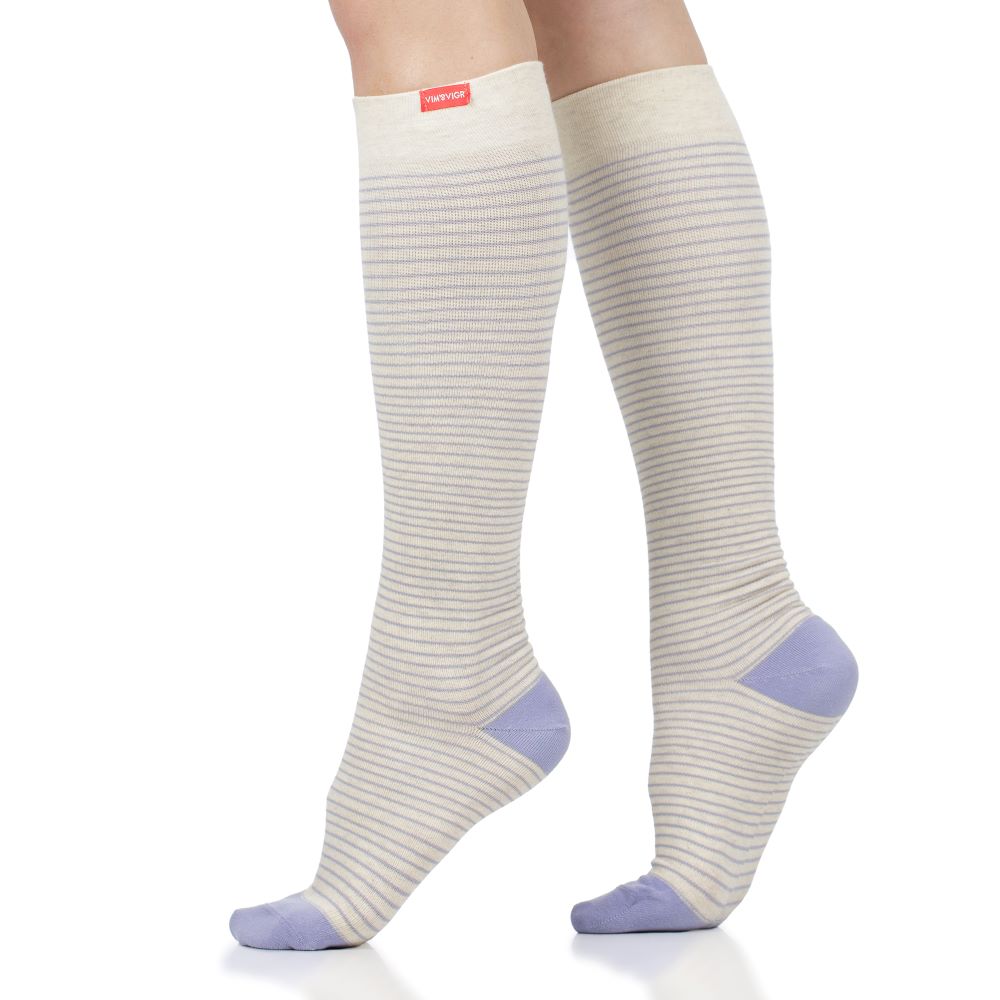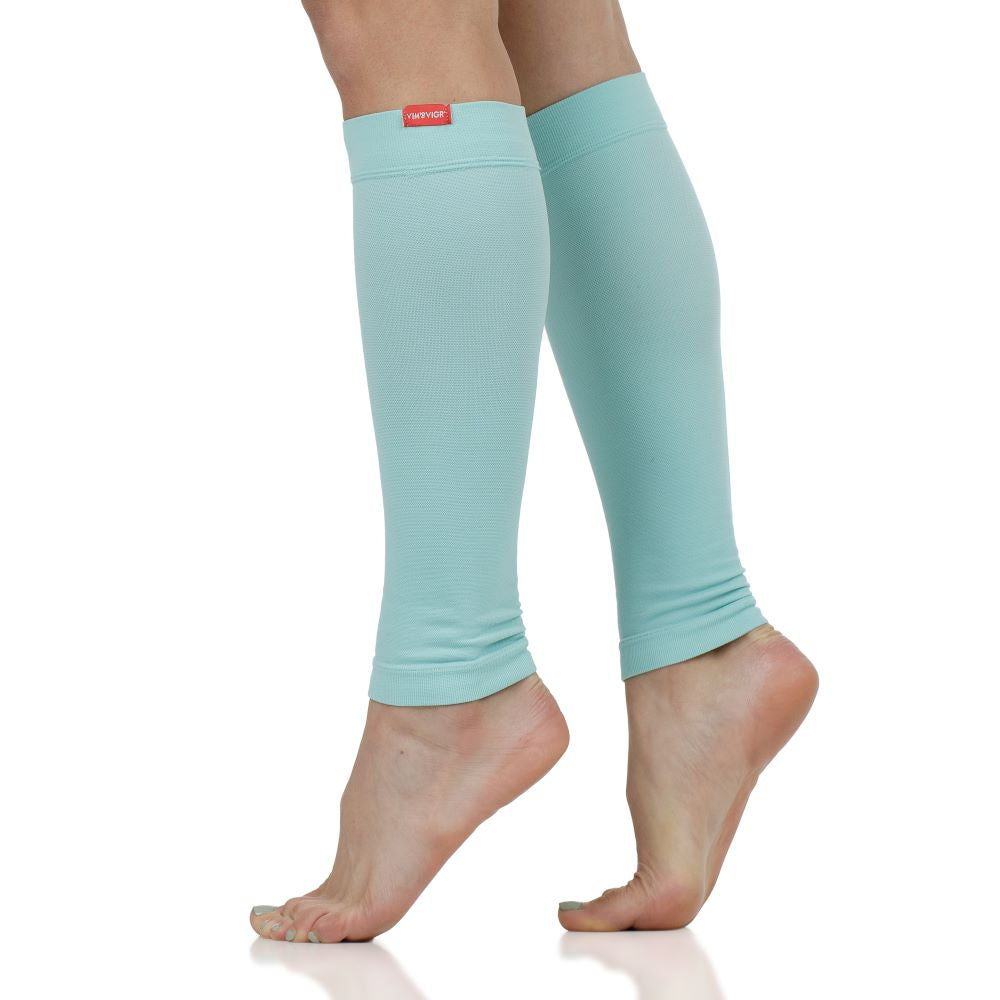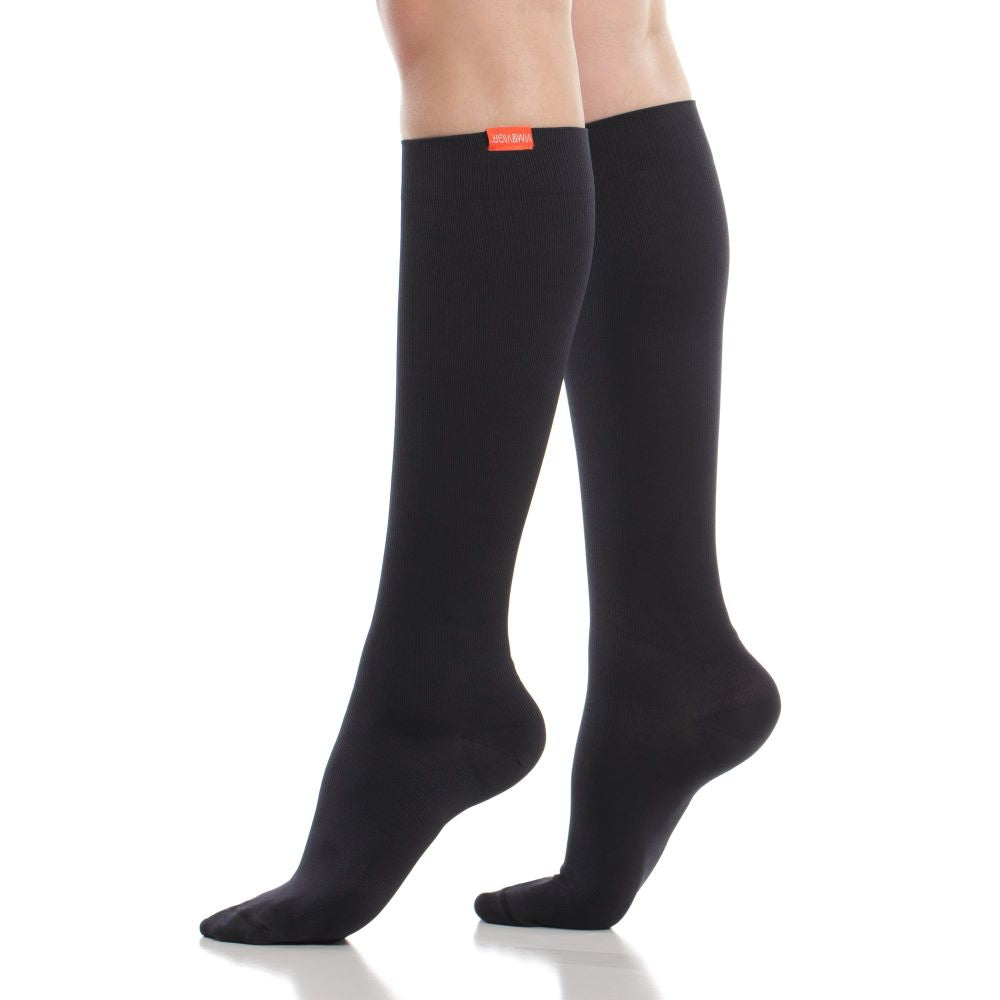Why Your Legs Feel Heavy + How to Get Relief at Home

Why Do My Legs Feel Heavy?
Been on your feet all day and now your legs feel heavy? The obvious solution would be to take a load off and sit down, but that’s not always an option — and actually isn’t always the best way to relieve those aches and pains. In addition to taking proactive steps to support your legs throughout the day, like wearing compression socks or making sure you have on the right pair of shoes, carving out 10 to 15 minutes in the morning or evening to stretch out is an easy way to ensure you stay as energized and as active as possible. Read on to discover simple leg stretches you can do anywhere to energize your tired legs.
What Does It Mean When Your Legs Feel Heavy?
The main reason your legs feel heavy is poor circulation. Blood is pooling in the lower part of your legs, which limits the flow of oxygen. Blood transports oxygen throughout the body, this is part of what refreshes muscles and generates energy. Poor circulation slows that process and makes your legs feel like cinderblocks. Luckily, there are a variety of ways to remedy this problem.
What Causes Legs to Feel Heavy?
Poor circulation is a common cause of heavy legs. Conditions like Edema can make this feeling more prominent and cause other issues. Essentially, in circulation, blood has to fight against gravity to get back up to the heart, throughout the day this gets harder for the body to achieve. Blood pooling causes the legs to then feel heavy.
Varicose Veins
Suffering from varicose veins can be painful on top of the aesthetic effects. While preventing vein disease from worsening, most patients are also looking for ways to relieve the symptoms of varicose veins, which include aching, swelling and cramping. Compression socks can be a great help in relieving symptoms and can combine with other remedies to treat varicose veins.
Peripheral Arterial Disease (PAD)
Peripheral Arterial Disease is a condition in which narrowed arteries hinder the flow of blood around the body. It primarily affects the arms and legs, but is primarily found in the legs. This limits blood flow and causes legs to feel heavy. Common preventative practices are as follows:
- Don't smoke.
- Control blood sugar.
- Eat foods that are low in saturated fat.
- Get regular exercise — but check with your care provider about what type and how much is best for you.
- Maintain a healthy weight.
- Manage blood pressure and cholesterol.
Compression socks are not recommended for individuals with PAD, but diabetic socks can help. Read more on compression socks vs diabetic socks here.
Overtraining Syndrome (OTS)
Overtraining Syndrome occurs when athletes train at such a level that leads them to the point of declining performance. Compression socks help to restore oxygen to affected muscles in the legs, making them an excellent tool for recovery.
Restless Leg Syndrome
Restless legs syndrome (RLS) is a condition that causes an uncontrollable urge to move the legs, usually because of an uncomfortable sensation. It typically happens in the evening or nighttime hours when you're sitting or lying down. Moving eases the unpleasant feeling temporarily.
The increased blood flow from compression socks has proven helpful with mitigating RLS.
“Fantastic
I had ordered a couple pair of very colorful socks as I am on my feet most days all day and my legs ache, hoped these socks would help. They are miracle workers and bonus..they are so cute
I have restless leg syndrome, thought I 'd try the sleeve. YAY, it helps my legs relax, I can sleep now!!” - Kay Brewster
Chronic Venous Insufficiency
Chronic venous insufficiency occurs when your leg veins don’t allow blood to flow back up to your heart. Normally, the valves in your veins make sure that blood flows toward your heart. But when these valves don’t work well, blood can also flow backwards. This can cause blood to collect (pool) in your legs.
If you’re already dealing with venous insufficiency, a circulatory disease or are at risk for blood clots, you should definitely consider adding compression socks to your routine! Venous insufficiency, chronic edema, POTS, dysautonomia, DVT are just a few of the conditions for which a provider might prescribe compression socks. If you think you could benefit from medical grade compression, talk to your doctor to see what will be best for you.
Heavy Legs During Pregnancy
Pregnancy edema is a widespread phenomenon, and it affects women, particularly during the third trimester. This is triggered by accumulated fluid in the body’s tissues, caused during pregnancy by the adrenal glands, which produce more of the hormones that make the body retain fluids (aldosterone and cortisol).
How Compression Socks Can Help Tired, Heavy Legs
Essentially, compression socks both prevent and treat the very thing that causes heavy legs – pooling blood. The gradual compression technology in our compression socks is tightest at the ankle and gradually lighter at the calf. This moves blood through the leg and back up to the heart.
Four Stretches To Try When Your Legs Feel Heavy
We asked group fitness trainer Katie Ferraro what stretches she does to prevent heavy and tired legs.
“CALF STRETCH
Perhaps the least invasive stretch you can add to your routine is a calf stretch. You can do this virtually anywhere, as long as you have a wall or upright surface. Standing with the ball of your foot against a wall with your heel on the ground, place your other foot a comfortable step behind you. With both hands on the wall, lean into your front foot, feeling the stretch in your calf. This should be a relatively gentle stretch, but extremely effective.
DOWNWARD-FACING DOG
Moving up to your hamstrings, a simple stretch to get the blood flowing is the classic yoga pose Downward-Facing Dog. Starting on your hands and knees, push your hips up and back. You should feel this stretch in the back of your legs. While in this position, you can make it more active to get a little bonus stretch by bending your knees, one at a time, nice and slow. This will give you an additional stretch in your calves. Plus, it’ll also take some of the pressure off your lower back and encourage blood flow throughout the body, helping you feel more energized. .
LEGS UP THE WALL
One of my personal favorites is another yoga pose: Legs Up the Wall. This one is pretty straightforward: All you need to do is lay down on the floor with your booty as close to the wall as possible. Once you’re there, extend your legs straight up the wall. This inversion reverses the blood flow, reinvigorating tired, heavy legs. Stay here for a few minutes, or as long as your body allows (plugging in a podcast or pulling out your book is a great way to encourage yourself to settle into the stretch).
COUCH STRETCH
While you are still nice and close to the wall, use it for the next stretch: the couch stretch, which targets your quads and your hip flexors (the muscles that connect your quads with your lower back). To get into this one, kneel in front of the wall with the wall behind you. Place both hands on the ground in front of you, and shift one leg back so your shin is parallel to the wall, with your knee on the ground. Try to get your knee as close to the wall as possible.
The goal here is to sit up as upright as you can, supporting yourself with your hands on your front leg. If you can’t get upright, no sweat! This tends to be a tough stretch for most people as we spend a lot of time sitting, causing us to have tight hip flexors. The mobility will come over time. The key here is feeling the stretch in the front of the leg that’s against the wall.
BEYOND LEG STRETCHES
While stretching each part of your legs will play a big part in relieving fatigue, you can do a few other things beyond stretching. When I’m on my feet all day and experiencing tired legs, my favorite thing to do is put on a pair of compression socks and roll out my feet. The compression socks promote blood flow to re-energize the muscles, and using a lacrosse ball to roll out the bottoms of my feet helps to relax the muscles connected to my calves and ankles. Oftentimes, we forget how much pressure our feet endure throughout our day, and this little massage — combined with a few deep stretches — is a nice treat! “
When to Call Your Doctor
We encourage you to consult with your doctor for most everything, to ensure there is not a larger problem such as DVT. Try these stretches and compression socks for at home relief, and if symptoms persist, ask your doctor to take a further look.
References
https://www.doyouyoga.com/6-yoga-poses-to-soothe-tired-legs-and-feet-11665/
https://www.youtube.com/watch?v=f1HzSAuB-Vw
https://www.youtube.com/watch?v=ZVtwWOpN170&feature=youtu.be
https://www.youtube.com/watch?v=_OQEIiZLY-0&feature=youtu.be
https://www.youtube.com/watch?v=B76K54D3xGA&feature=youtu.be
https://www.youtube.com/watch?v=IAvAmciUoC4&feature=youtu.be


















Leave a comment